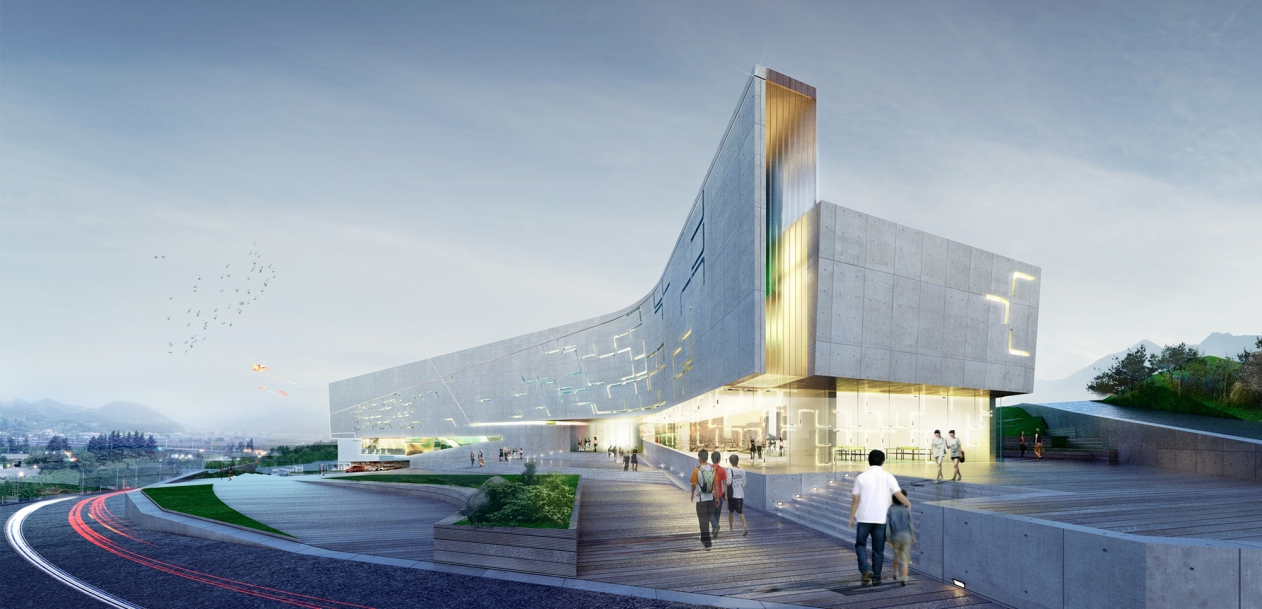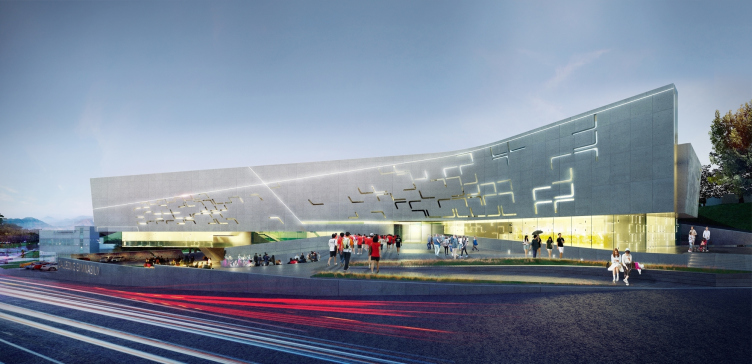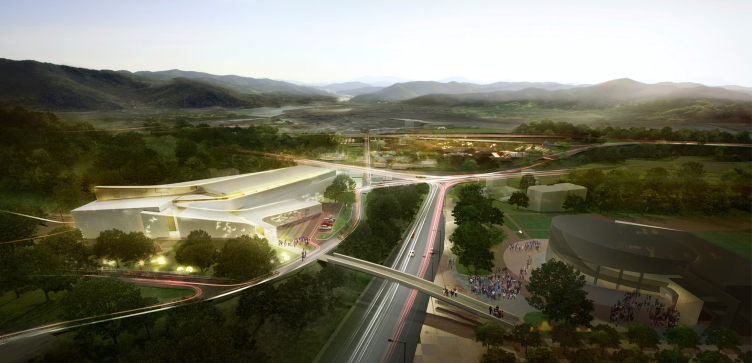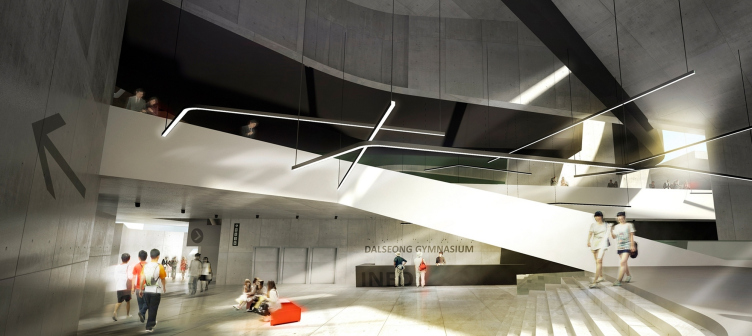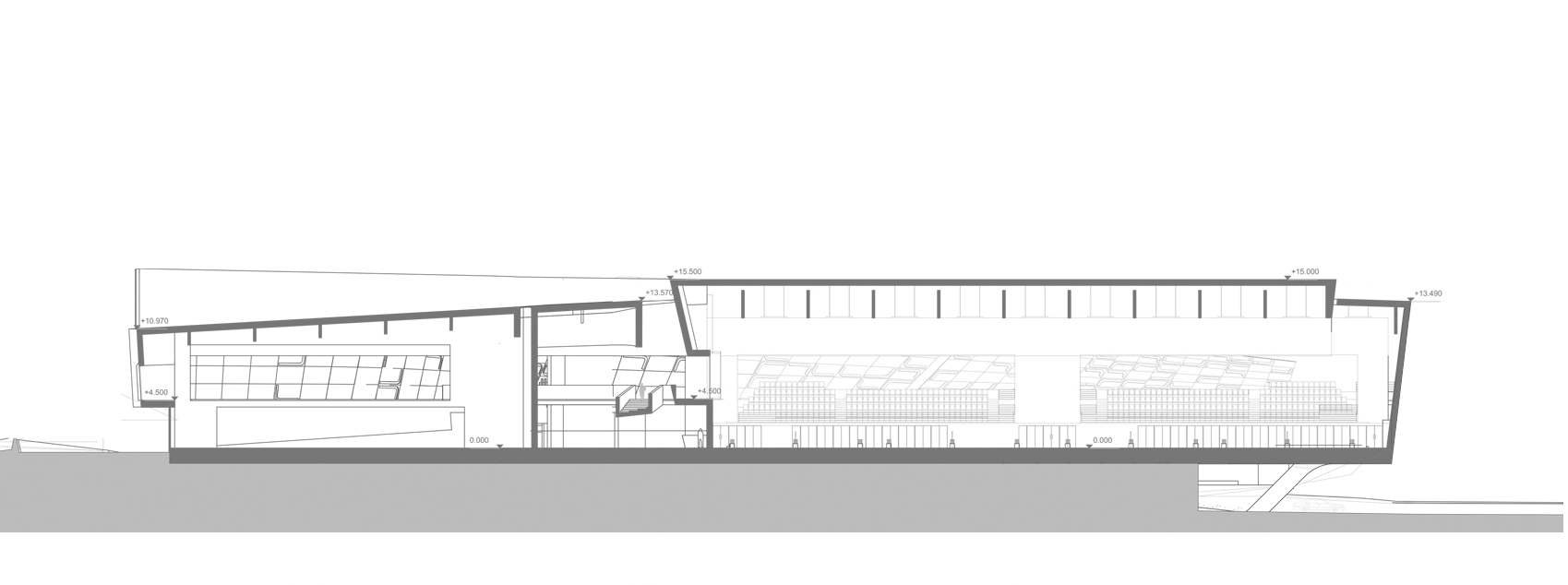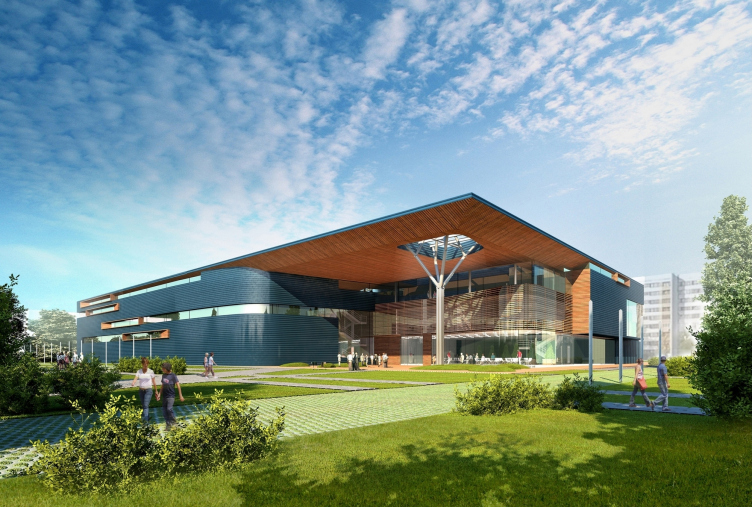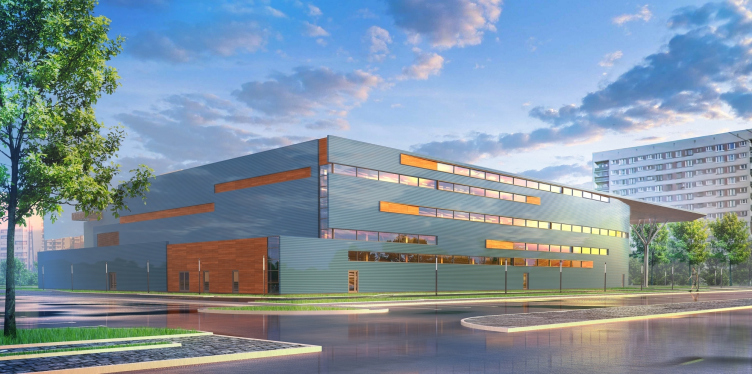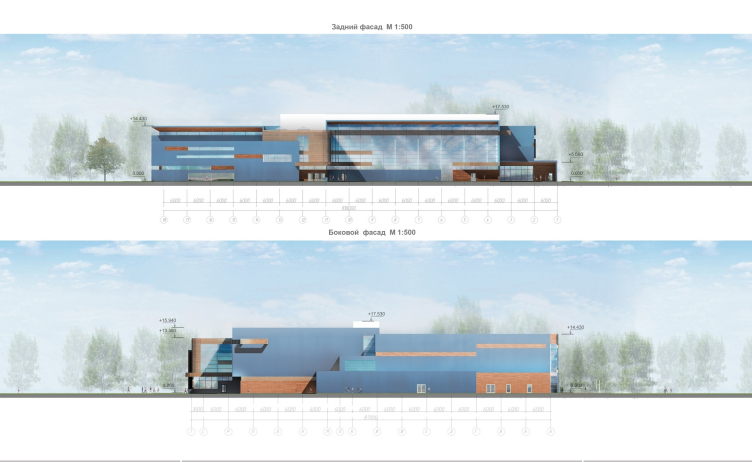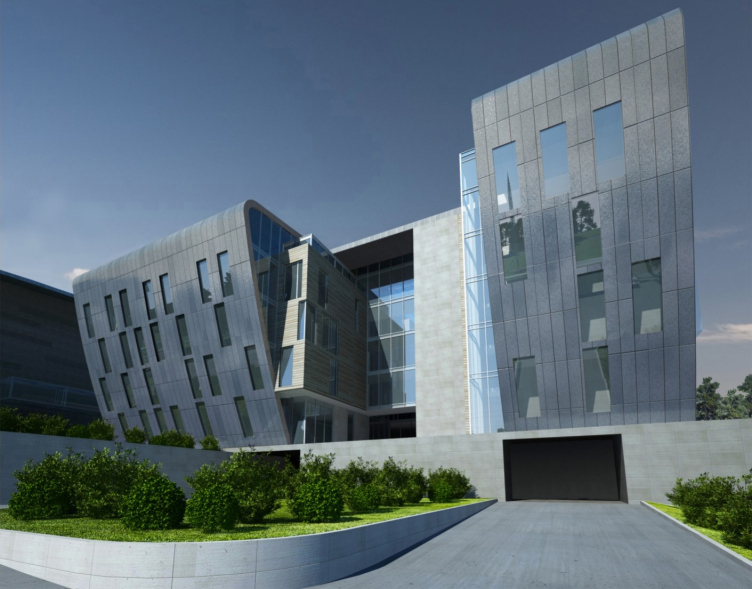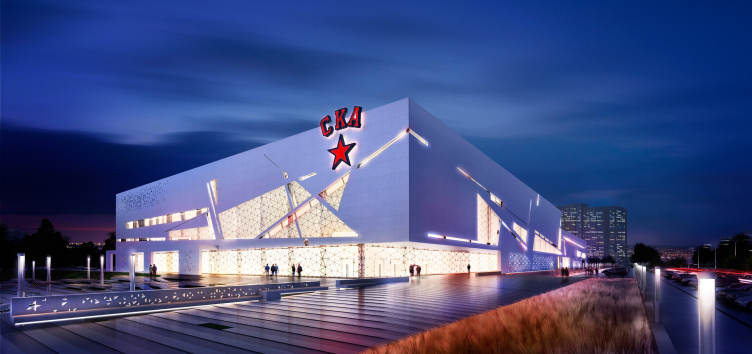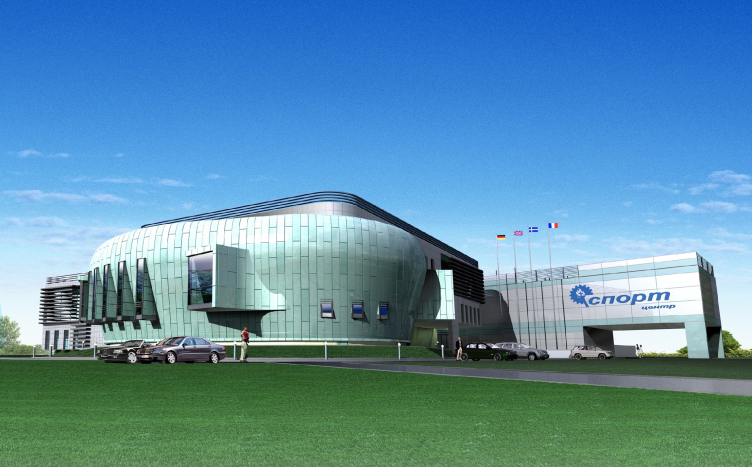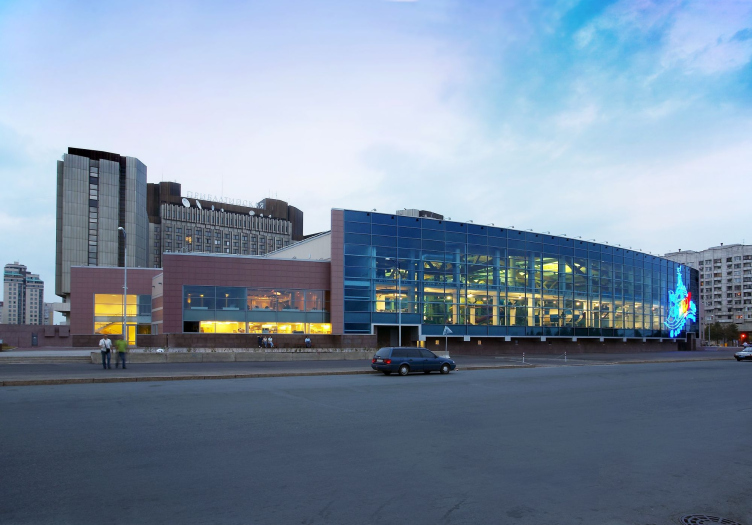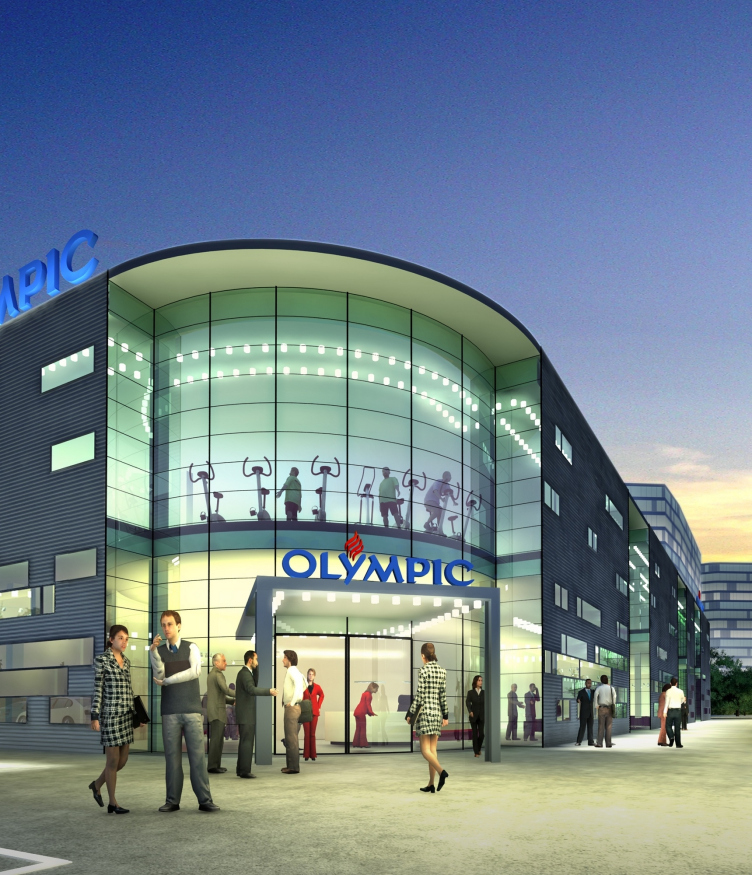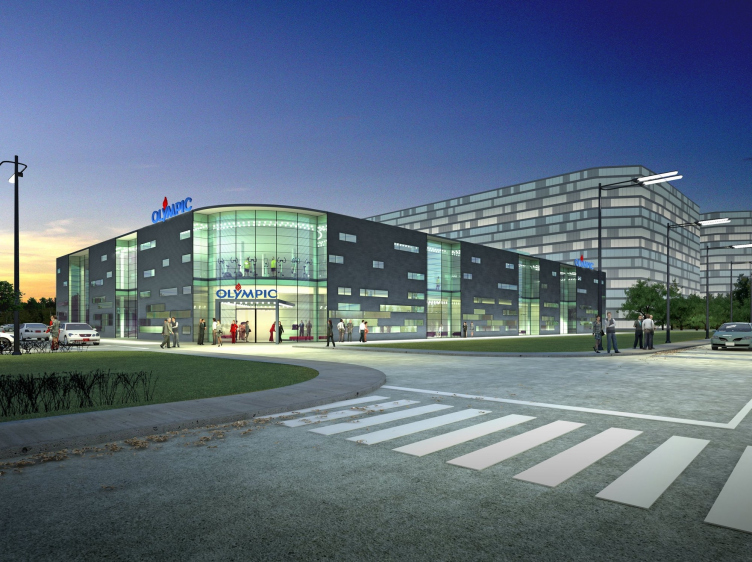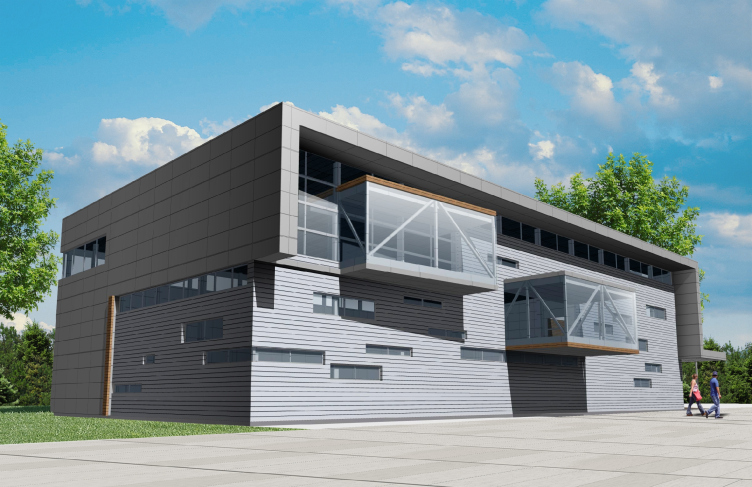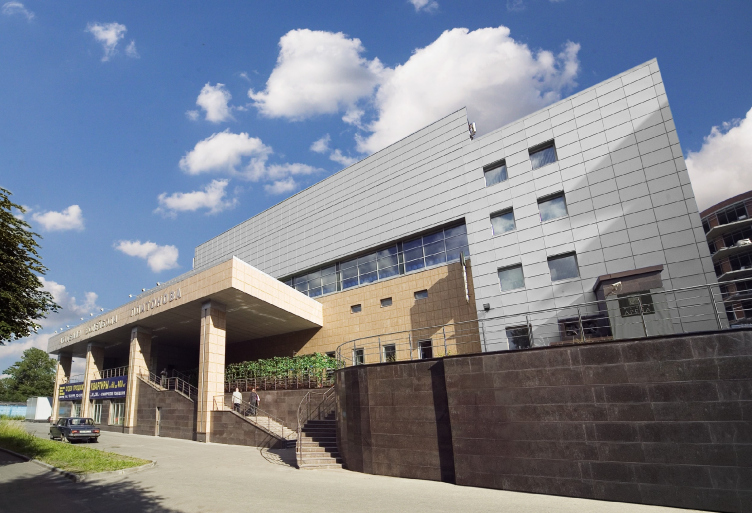We talked to the leader of "A.Len" Sergey Oreshkin about the sports architecture, its specifics and possible prospects. The company's portfolio includes one of Russia's largest roofed water parks (in spite of the fact that this water park belongs in fact to a hotel) named "Waterville", this park actually being the first one to be ever built in Saint Petersburg; "Reebok" sports complex; a multifunctional spa complex at the Veteranov Avenue; the sports complex of Civil Service Academy; the education and training facility of "Zenith" football club; "Platonov Academy of Volleyball" built in 2006, although with considerable changes made to the project that the authors still regret; and a whole number of other sport facilities. Presently, the architects of "A.Len" perform the construction of SKA ice hockey stadium, while last year Sergey Oreshkin and his bureau for the first time took part in the international contest for a badminton-oriented multifunctional sport complex in South Korea, offering a smooth-stroke "hieroglyph" building.
Project of a sport complex for the district of Dalseong-gun,South Korea © "A.Len" Architectural Bureau
Project of a sport complex for the district of Dalseong-gun,South Korea © "A.Len" Architectural Bureau
Archi.ru:
- Could you please share about your project of this sports complex in South Korea? Why did you decide to take part in it and what were the main conditions of participation?
Sergey Oreshkin:
- The idea to take part in this contest was suggested to us by our German colleagues. At that time, we worked a lot on various sports facilities; besides, South Korea is a small country but it's quickly developing. We examined the land site and we liked the place - though a bit depressing today, it is still beautiful in its own way, and it has a huge potential: next to it, there is a large federally financed residential complex, and a river, too. Besides, this is a region with a rich history; it's got a lot of sanctuaries and museums in it.
The city wanted to get an interesting bright landmark that would attract everyone's attention. It seemed to us, however, that the contest program significantly digressed from what it was originally meant to be. The world crisis set in; China, that used to build a lot upon the projects of world-class architects, suddenly took the diametrically opposite attitude - against any high-maintenance architecture, for example, Zaha Hadid and other "star" architects. And the Koreans also changed their preferences in favor of functionality, simple "cubes", not to put too fine a point on it. And as for us, we are the advocates of comfortable and context-friendly architecture - if this place does not need an architectural monument, we will not build one here. In that particular case in Korea, however, an architectural monument was exactly what that place needed but ultimately the judging panel opted for the utilitarian "sport goods" warehouse.
Project of a sport complex for the district of Dalseong-gun,South Korea © "A.Len" Architectural Bureau
Project of a sport complex for the district of Dalseong-gun,South Korea © "A.Len" Architectural Bureau
Project of a sport complex for the district of Dalseong-gun,South Korea © "A.Len" Architectural Bureau
Project of a sport complex for the district of Dalseong-gun,South Korea © "A.Len" Architectural Bureau
To me, this contest was very useful from the ideological standpoint: in this country, we do not design things the way they do over there. The thing is that their buildings are not meant exclusively for sports, you can organize any public event there. The specifications required that a large hall - the size of eight-nine baseball fields - could be used, for a concert, for example.
The contest was won by a Ukrainian project: a simple building with semitransparent walls of milky glass - a decent, sturdy project. To me, however, these walls will not be able to provide the sufficient amount of light, and in sports, particularly in badminton, light is very important and is subject to rigorous regulations.
- Do you think your project is better?
- This is just me, but the winners' projects seemed to me all too "international" and lacking identity. Such buildings could appear just about anywhere. But why build this "interarchitecture"? We tried to approach our project "evolutionally", tried to understand these people's outlook on their lives, tried to find out what had been there at this place in the days past - it was an exciting game of associations. To cap it all, badminton is a "trajectory" sport, the birdie never flies in a straight line, it flies over curved parabolas - which we tried to ultimately get across. I think that our project was executed on a highly professional level.
- Incidentally, how do you think a great sport facility must look, say, in the context of Saint Petersburg?
- We live in a city that has Scandinavia breathing down its neck, and you feel with your skin that this place was populated by the Finns, Karelians, Ingermanlanders, this is a Finno-Ugric land. Again, that's just me but I feel that it all comes down to you doing architecture that is Scandinavian to a certain degree.
On the other hand, it doesn't seem to make much sense to me trying to combine an expensive bent construction of glued wood with a cheap facade, the way we see it on the children's sports complexes that are now being built in Saint Petersburg on Gasprom's money. To me, this looks a bit ineffective. If we are to speak about a family sport school, the kind that they've got at the Veteranov Avenue, it must be first of all a great place to be, one that you would want to come back to - over and over again. And this is the reason why our philosophy here is all about the wood or wood-imitating materials, a zone with a large marquee, i.e. the entrance element where people can meet and maybe have a conversation securely protected from the rain or snow. And then, the function kicks in - the federal authorities write the specifications for us: we want a skating rink, a swimming pool, and a universal gym - the way it was with the sport school in Sosnovaya Polyana. Essentially, this is an all-purpose gym that anyone can do sports in, including people of limited mobility. It was a great idea, and, I hope we quite succeeded in implementing it.
Youth Sports School © "A.Len" Architectural Bureau
Youth Sports School © "A.Len" Architectural Bureau
Facades © "A.Len" Architectural Bureau
Before that, we had a few go's - we designed a lot for "Zenith" football club, then, also, "Petrotrust" club also ordered something. And then this ice-hockey club came to us, which meant a real large-size commission, so, we have been building this SKA club for three years now. With that project, we do everything there: landscape design, geodesic survey, and exclusive architecture; we also work a lot with the suppliers and do the interior designs as well.
Project of the sport complex SKA © "A.Len" Architectural Bureau
Project of the sport complex SKA. Facade © "A.Len" Architectural Bureau
Training facility of "Zenith" football club © "A.Len" Architectural Bureau
Training facility of "Zenith" football club © "A.Len" Architectural Bureau
- The project of this SKA sport complex won the tender but then it was significantly redone. Why and in which ways did it change?
- In our contest project, we wanted to convey the feeling of motion: how an ice hockey player moves about the field, how a hockey stick looks like, what stance he is in when on the attack. Turned out, there are lots of curved lines, so what we ultimately got was curved architecture that consisted of intertwining lamellae. There were also the vertical lamellae - the glowing panels, each one of which could display different motifs. At the end of the day, the customer said that, because thus building is all "skewed and lopsided" it would be very high maintenance.
Then we came up with a different idea: let it be a huge chunk of ice, with traversing side cuts in it. The result was cubic architecture, a very simple constructivist thing based on the ideas of avant-garde of the twenties. What made our project different, though, was a fair share of symbolism in it: ice blade trails, trajectories of the hockey puck, and so on. We proposed to start off with the most basic girder construction but we wanted to draw it all beautiful and use the ceramics as the finishing material for the facade.
Project of the sport complex SKA. Project, 2012 © "A.Len" Architectural Bureau
Project of the sport complex SKA. Section view. Project, 2012 © "A.Len" Architectural Bureau
- What do you think makes designing sports facilities different from other kinds of architecture - how much more difficult are they, for example, than shopping centers?
- Ten times as difficult. You need at least four venues of different types, and this puts a lot of requirements on ventilation, especially when it comes to the skating ice. I only know a handful of people in Russia who are capable of making correct plans of refrigeration of the ice and routing the cold supply to it. It is very difficult to support the constant ice temperature while the temperature outside is constantly changing, plus the people who come to the competition also emanate a huge amount of warmth in uneven portions, especially when the spectators seats are not evenly distributed.
There are a lot of subtleties here - the sound, the light, and many more. Plus, the possibilities of today's television also put forth a lot of challenging requirements. There is a growing tendency for using the Full-HD format but in order to make the most of it you need to do the filming in a certain place, put up the lights of specific wattage and type, and they must be oriented in different directions too. You need to keep all these things in mind. The postgame interviews can only be taken in the zones with the correct light, and the reporter that takes the interview must not have access to the locker room - this may sound like a little thing but it's really important. Another important consideration is the acoustic properties of the premises - there must not be so much as a hint at echo.
Sport and recreation facility of Civil Service Academy © "A.Len" Architectural Bureau
"Waterville" park © "A.Len" Architectural Bureau
"Waterville" park © "A.Len" Architectural Bureau
- In which way do you as an architect want to develop within the framework of this genre? Do you dream of building your own stadium one day?
- Building a stadium is not very much of an exciting prospect, to be quite honest. It's all about standardization now; the "clew" theme has already been used by Herzog & de Meuron, the "bubble" theme - "Alliance Arena" is also history now. Inventing something entirely new is very difficult in view of the fact that a stadium is a very large architectural edifice with its shell mounted directly upon the function that in fact sets the configuration of the building. Meaning - the very genre has too little of a resource to it, it must accumulate it before customers finally get fed up with these crates and buckets.
Today, one would be doing the right thing working with small-scale facilities - designing the small sports objects or even the outdoor gyms - there are few companies that do that. The option for your very own neighborhood! Perhaps, one could think of designing a very stylish, top-quality "designer" gym - the all-purpose kind that you can attach to any senior or junior high school. We did quite a handsome project, the "Baltic States style" kind, and for a long time we tried to pull it through the city council board. We ultimately got some response - it was after that struggle that we got the commission for the project of a sport school in Sosnovaya Polyana.
It would be interesting to do a project for Gasprom or Rosneft - instead of the "brokeback" stilted architecture that we see almost everywhere now, we could come up with a comfortable thought-out space that is great to be in. We want to do an object with an environment that people will feel like caring about in the years to come.
Sports and Recreation complex © "A.Len" Architectural Bureau
Sports and Recreation complex © "A.Len" Architectural Bureau
A project of a hotel combined with a water park, Nizhny Novgorod © "A.Len" Architectural Bureau
All-purpose gym © "A.Len" Architectural Bureau
Mountain tourist center with a spa, water park, and a swimming pool, Sochi © "A.Len" Architectural Bureau
Mountain tourist center with a spa, water park, and a swimming pool, Sochi © "A.Len" Architectural Bureau
Platonov Volleyball Academy © "A.Len" Architectural Bureau
